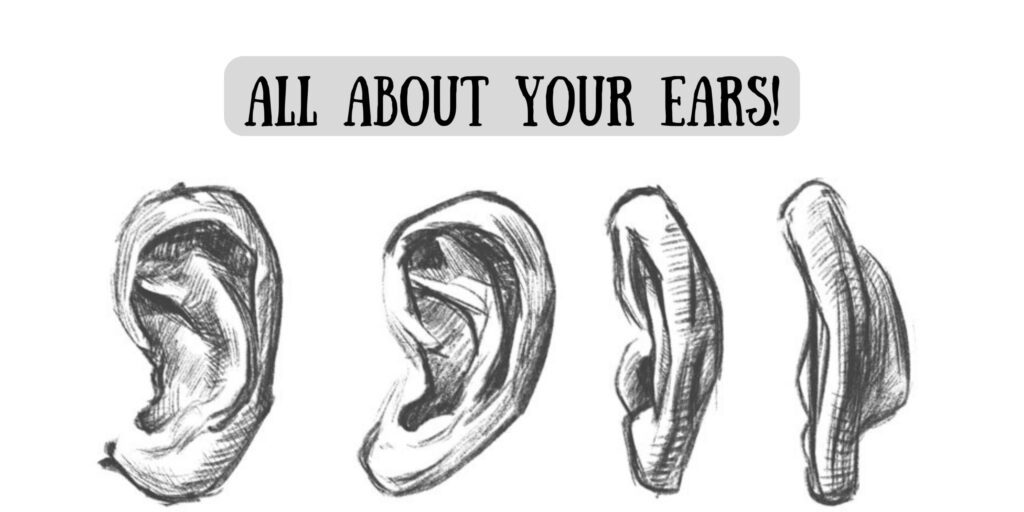Functions of the human ears
The functions of the human ears are addressed carefully in this article. The ear is a very sensitive part of the body. Its main job is to pick up, send, and convert sound. Another important job of the ear is to keep a person feeling balanced. Like other animals’ ears, the human ear has sensory organs that do two different things: hearing and balancing the body and coordinating head and eye movement patterns.
Ears can be of different shapes and sizes. One study found that men’s ears tend to be bigger than women’s. Researchers found that the average ear is about 2.5 inches long (6.3 centimetres), and the standard ear lobe is 0.74 inches long (1.88 centimetres) and 0.77 inches wide (1.96 centimetres). They also found that people’s ears get bigger as they get older.
One study found that women’s ears got bigger than men’s. In the study, the longest ear length for a 20-year-old woman was 2.4 inches (6.1 cm), while the longest ear length for a woman over 70 was 2.8 inches (7.2 cm). Men’s ears were 2.6 inches (6.5 cm) at age 20, and they were 3 inches (7.8 cm) at age 70.
The outer ear and the middle ear
A person’s ear has three parts: The outer ear, the middle ear, and the inner ear. They all help with hearing and balance in different but important ways.
The ear canal in the outer ear is covered with hairs and glands that make wax. This part of the ear keeps the ear safe and helps sound travel. The auricle, which is also called the pinna, is the part of the outer ear that most individuals imagine when they hear the word “ear.”
The outer and middle ears play a vital role in the functions of the human ears. The malleus, incus, and stapes are three very small bones that are found in the middle ear. The sound waves travel from the eardrum to the inner ear through these bones.
The middle ear is a very important part of the ear because it has a lot of air holes that could be used for infections to spread. It’s also where the Eustachian tube is, constantly keeping the air pressure on the inside and outside of the tympanic membrane (eardrum).
The inner ear
The hearing organ is in the labyrinth, which is another name for the inner ear. The inner ear keeps the body’s sense of balance. Inside a skeletal shell is a system of membrane cells that work together in a complicated way. The name “labyrinth” comes from the complex structure of the inner ear.
The part played by the inner ear in the functions of the human ears is critical. There are two main parts inside the “cochlea” of the ear. These are the bony labyrinth and the membranous labyrinth. The organ that helps us hear, called the cochlea, is deep inside the inner ear. The snail-shaped cochlea comprises three fluid-filled chambers that spiral around a bony core with a central canal called the cochlear duct.
This part of the ear is in charge of sending sound signals to the brain. The main organ for hearing is the “Corti”, a spiral-shaped organ which is found inside the cochlear duct. The hair cells in the Corti organ pick up sound and send the information to the brain through the cochlear nerve.
Ear infections and prevention
Ears are fragile organs that can be hurt by bumps, germs, or environmental changes. Ear infections are the most common sickness in babies and young children. Ear infections often cause a full feeling in the ear, pain in the ear, headache, fever, hearing loss, earache, and pus coming out of the ear. Meniere’s disease is a problem with the inner ear caused by issues with fluid in the ear. Hearing loss, dizziness, pressure or pain, and hearing ringing in the ears are all signs. Tinnitus causes a roaring sound in the ears. It can also be caused by loud sounds, medications, or several other things.
Sound waves pass the outer ear, move through the middle ear, and then reach the inner ear, which has a complex network of cells, bones, nerves, and canals. These are the steps in the functions of the human ears.
Once the hearing has been lost, it is hard to get it back. Most people who have trouble hearing need surgery or hearing aids. People who perform loud activities or hobbies, like shooting sports, riding a motorcycle, going to sports games, music concerts, or mowing the lawn, should use earplugs or headphones that cancel out or block out noise to protect their hearing.
Cleaning the ears well is another way to prevent hearing loss and damage. Then, put a few drops of glycerin, baby oil, commercial drops, or mineral oil in the ear to make the wax tender and help it drain. A couple of drops of carbamide peroxide or hydrogen peroxide might also help the wound heal. Don’t ever stick anything in your ear.



